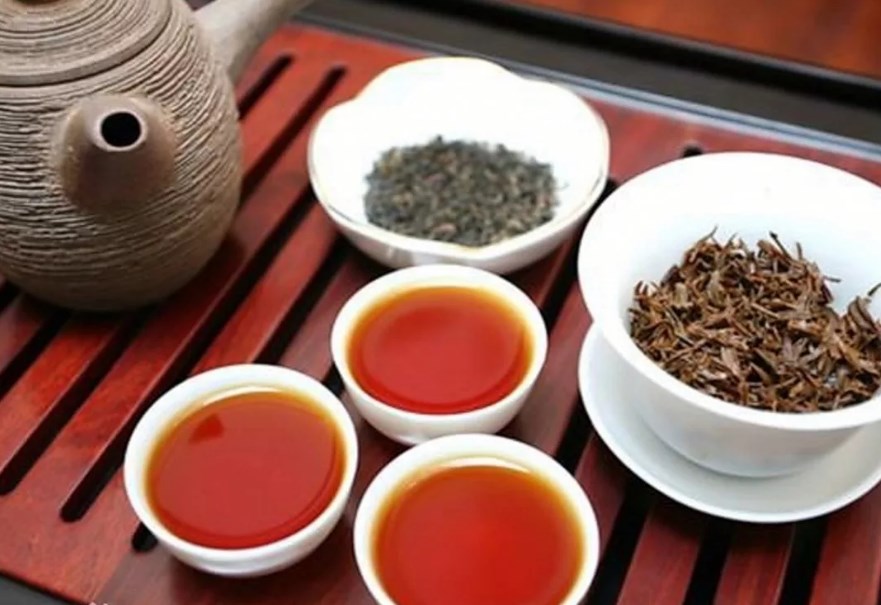
Rating of the best varieties of red tea for 2025
Tea is a fragrant drink that has won the hearts of people since time immemorial. The history of mankind is tightly intertwined with the history of this drink. It is not for nothing that tea traditions are honored and observed to this day in many countries of the world.
Tea has many varieties and varieties. In our rating, this time we will pay attention to red tea and red tea-like collections. However, first we suggest you make a brief digression into the classification of teas in order to determine which tea is called red.
Content [Hide]
Briefly about the classification of teas
The geography of the tea bush is quite wide.The leaders in growing this crop are 10 countries (in descending order of production volumes): China, India, Kenya, Sri Lanka, Turkey, Indonesia, Vietnam, Japan, Iran, Argentina. At the same time, only 3 varieties of this plant are grown in all these regions. This is the first criterion for classifying tea.
So, according to the type of tea plant, they distinguish:
- The Chinese variety is a low shrub that grows in China, Vietnam, Japan, Taiwan. For the production of high-quality tea, only the topmost leaves and buds are used. Of particular value is the fact that raw materials are collected only by hand.
- The Assam variety is a tall tree up to 20-25 meters growing in India, Sri Lanka, Uganda, Kenya, etc.
- the Cambodian variety is a hybrid of the previous varieties, growing in Cambodia and other countries of Indochina.
It is logical that in different growing regions there will be different natural conditions: soil, precipitation regime, microclimate, etc. In accordance with this, the next criterion for classification is the country of origin. As mentioned above, these are China, India, Kenya, etc.
In addition, teas differ in the type of mechanical processing (loose, pressed, extracted); by type of tea leaf (whole-leaf, small-leaf, tea cuttings, tea dust), etc.
There is another of the most important criteria - the degree and method of fermentation. It is the degree of oxidation of the tea leaf that determines the color of the brewed drink, which is subsequently indicated in the classification, which is clearly seen in the diagram.
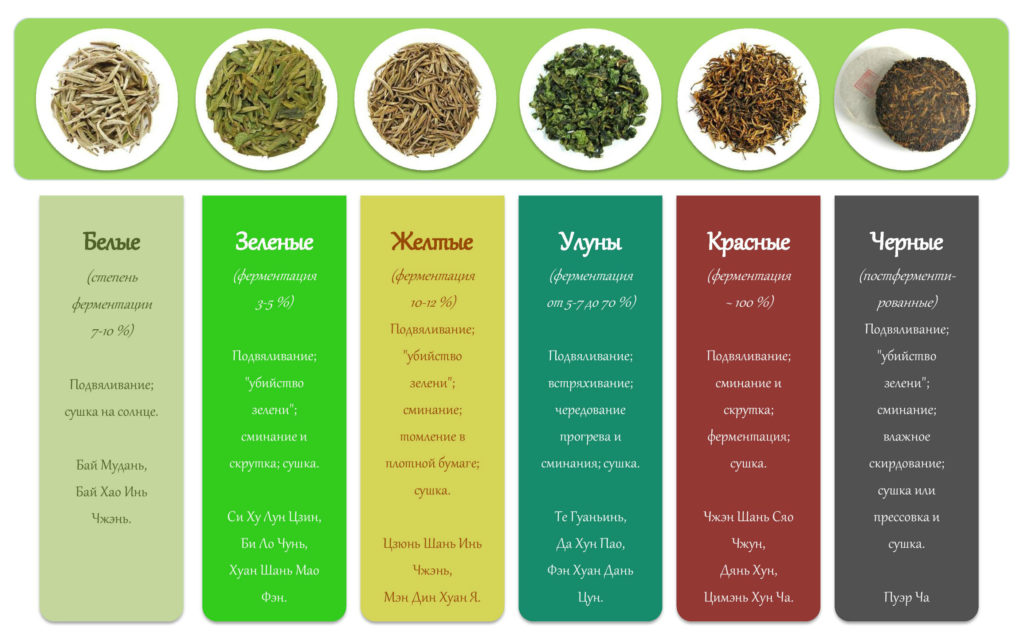
It is worth noting that the red tea we are interested in is called black in our country and in Europe, which often causes confusion.The classification according to the degree of fermentation takes into account the color of the finished drink, and we are used to distinguishing teas by the color of dry leaves (green, black). The producer of red tea is China, which is the motherland and supplies a huge number of its varieties.
In addition to all of the above, the presence of additives affects the selection of species, in connection with which flavored, fruit, and herbal teas are distinguished. By the way, the latter include tea-like red drinks of interest to us: Hibiscus and Rooibos.
The best varieties of red tea
China is the birthplace of red tea. It was there that they came up with the idea of subjecting the leaves of the tea bush to fermentation, as a result of which they are oxidized and subsequently give an unsurpassed taste and aroma, while coloring the drink in red-brown and even burgundy.
The most popular varieties of red tea both in its homeland and in other countries, including ours, are:
- Qi Men Hong Cha (Keemun)
- Dian Hong (Yunnan)
- Gui Hua Hong Cha
- Xiao Zhong or Lapsang Souchong
Let's take a closer look at each of them.
Qi Men Hong Cha (Keemun)
votes 6
This variety is grown in the eastern part of China (south of Anhui Province, Qi Men County). The full name of the variety sounds like Qi Men Gong Fu Cha, which is translated as “tea of the highest skill from Qi Men”, because. its production requires special skill. In other countries, Qi Men Hong Cha is more commonly known as Keemun. It is an indispensable component of all the famous English teas.
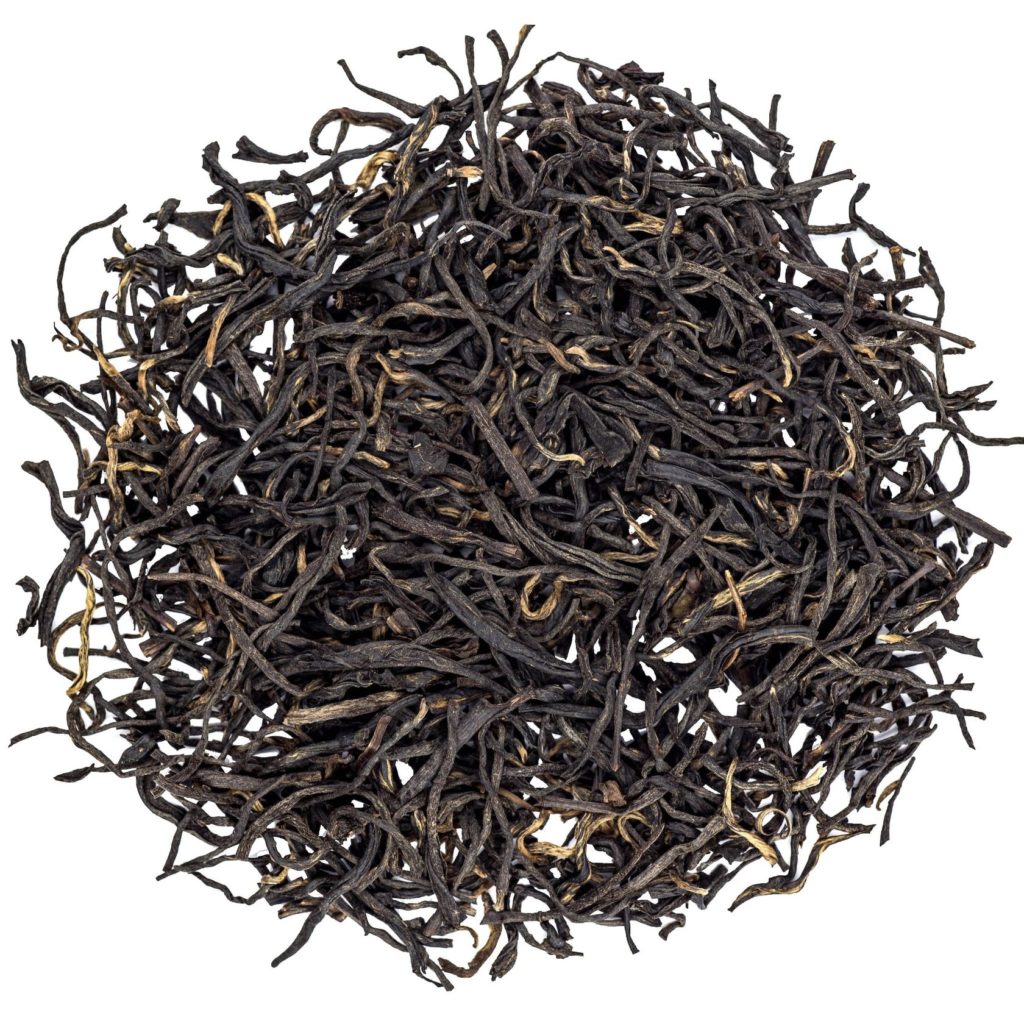
The raw material for this tea is the upper buds with 2-3 leaves, which are harvested in spring and early summer. They are carefully picked by hand, then dried, each leaf is twisted, given time to oxidize and dried. Such a careful attitude to raw materials and their masterful processing ensure the high quality of the final product.It is for this that Keemun is valued. It is characterized by a rich tart taste, in which notes of wine and pine can be distinguished, and a long aftertaste. In addition, it has an extraordinary aroma with hints of honey and fruit. Color from hazel-red and ruby to chestnut.
The cost of 50 g - from 130 rubles.
- the most famous and most exported variety among the reds;
- included in blends of famous English teas;
- uniform dry leaf;
- beautiful color of the brewed drink;
- rich, moderately strong with a pleasant sweet aftertaste;
- can be combined with milk, lemon, alcohol;
- contributes to increased performance. favorably affects brain activity;
- helps fight inflammation in the body;
- loaded with antioxidants.
- not found.
Dian Hong
votes 3
Dian Hong's birthplace is Fengqin, located in the mountainous regions of Yunnan Province. It is the mountainous terrain, and it grows at an altitude of 1000-2000 m, that endowed this tea with unique characteristics: the buds grow almost all year round, fresh leaves have a slight golden hue, and there are small villi on their inner side. Raw materials are carefully harvested by hand, then dried, each leaf is rolled, fermented and dried until tender. What is remarkable in the dry state, the leaves are brown with golden splashes.
Dian Hong is very popular all over the world due to its unforgettable taste and aroma. The brewed drink has a bright copper-red color that attracts attention and enchants at the same time. After brewing, the leaves unfold, acquire a shine. The spicy taste of the drink with a hint of freshly brewed coffee and the aroma with a hint of chocolate and honey will not leave anyone indifferent.
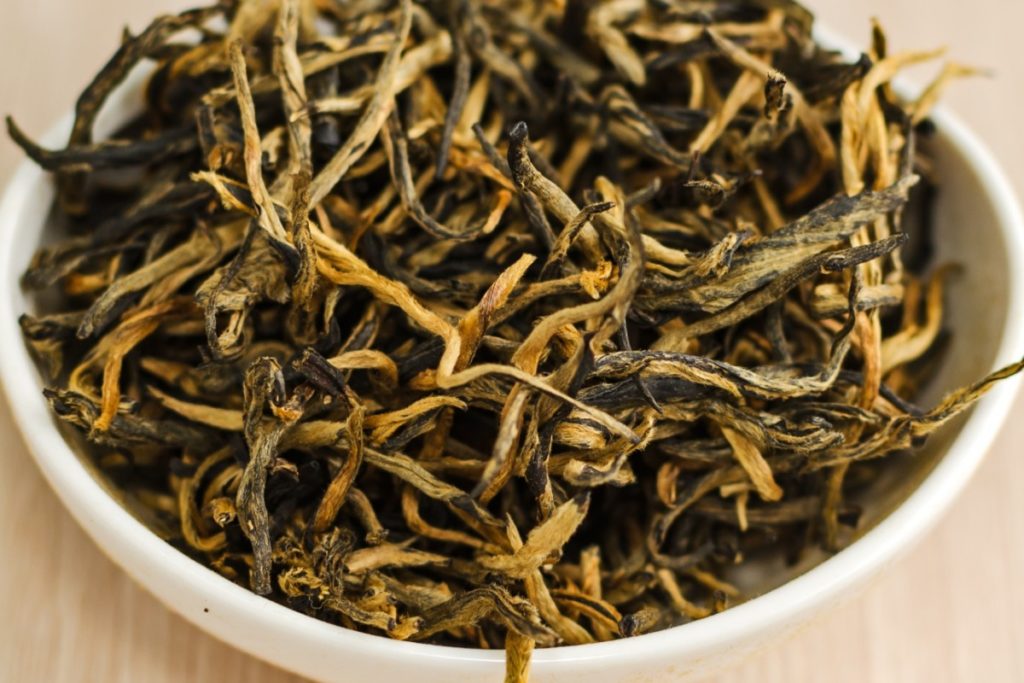
There are many varieties of Dian Hong, the difference between which lies in the ratio of buds and leaves in the composition. Depending on this, they differ in color from brown to deep red, as well as other organoleptic characteristics.
The cost of 100 g - from 310 rubles.
- fragrant both in dry and brewed form;
- varied aftertaste;
- high content of nutrients;
- rich in vitamins and microelements;
- has a general strengthening effect on the body with regular use;
- included in the diet for dietary nutrition;
- withstands up to 5-6 brews without loss of taste.
- not found.
Gui Hua Hong Cha
votes 3
Gui Hua is an osmanthus flower, Hong Cha is a red tea, respectively Gui Hua Hong Cha is a red flower tea flavored with osmanthus flower pollen. This variety is produced in the provinces of Anhui, Fujian, Yunnan, Guangxi. Unlike previous varieties, this one is harvested throughout the year. For its production, ripe dense leaves are suitable, which are plucked along with twigs. They are crumpled, rolled tightly, left in the sun for the fermentation process. During further processing, dried leaves are dried and osmanthus flowers are added to them, which saturate tea with their aroma for 100 days. Remarkably, the osmanthus flowers are then removed from the mixture, leaving only the pollen and some petals. As you can see, the process is extremely laborious, but it's worth it.
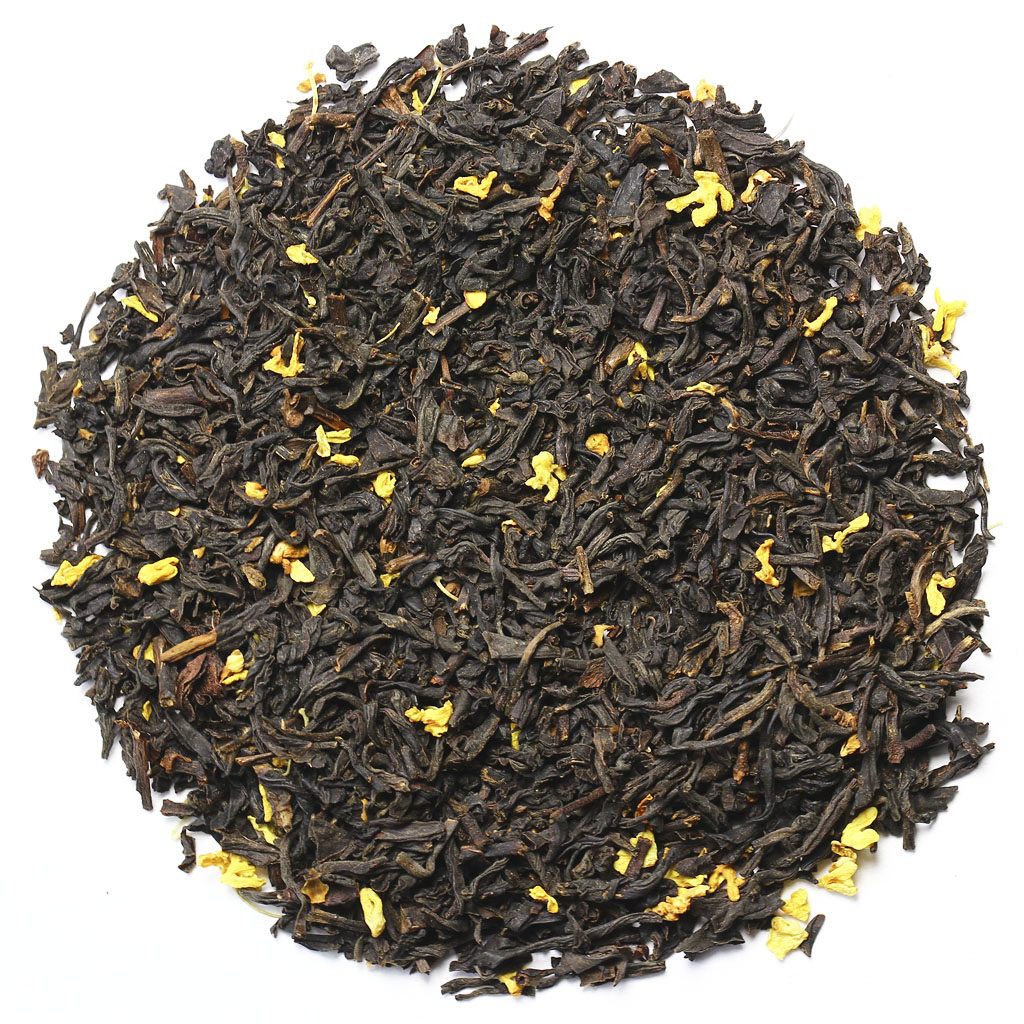
The dry product has the smell of apricots with cream, the tea leaves are tightly rolled and black in color with a slight admixture of golden flowers. The finished drink has a rich taste with a hint of flower honey, the color is amber.
The cost of 50 g is from 136 rubles.
- classic version of red flower tea;
- wonderful fruity-floral aroma and rich honey taste;
- can be brewed up to 6-7 times, which will only contribute to the full disclosure of taste;
- returns physical tone, relieves fatigue;
- has a beneficial effect on the body: lowers cholesterol, helps reduce blood clots, removes excess fluid from the body, etc.
- not found.
Xiao Zhong (Lapsang Souchong)
votes 2
Xiao Zhong grows in Fujian province on the slopes of the Wuyishan Mountains. Mountain conditions without sharp winds and temperature changes at constant high humidity result in a harmonious and balanced taste of the finished drink. In principle, its processing is similar to the previous varieties, but there is one key difference - smoking. Dried leaves are smoked on pine coals, which gives the drink astringency and resin aroma. The finished drink has an amber color with a reddish tint. In the sweetish and tart taste notes of prunes stand out clearly. It is important to follow the cooking rules and drain the first tea leaves - a sharp resinous aftertaste will go with it. Further brewing reveals all the versatility of tea.
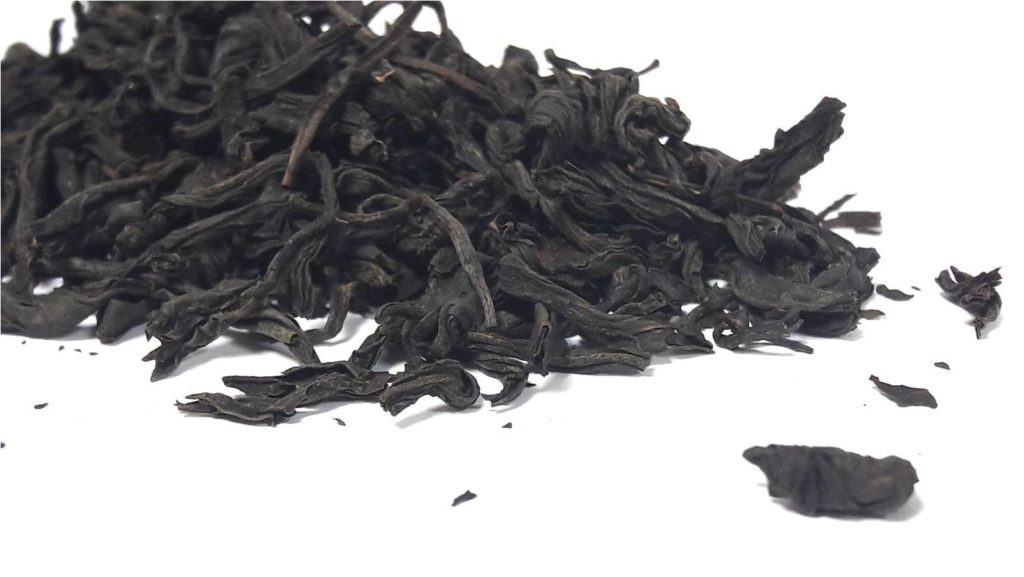
The cost of 50 g - from 395 rubles.
- unusual incomparable taste qualities of the finished drink;
- perfect for restoring physical and mental strength;
- perfectly relaxes after a hard day;
- can be stored for a long time without losing its qualities;
- withstands up to 8-9 brews.
- not everyone may like the rather specific smell and smoked taste;
- expensive.
Subtleties of brewing red tea
Each variety has its own characteristics of brewing. For convenience, we have compiled a table that reflects the main points of preparation.
| Variety | Amount of tea leaves, g | Amount of water, ml | Water temperature | Brewing time | Number of Straits | Brewed tea color |
|---|---|---|---|---|---|---|
| Qi Men Hong Cha | 5 (1 tsp) | 120 | 85-90 | 1-2 min | 7 - 8 | ruby red |
| Dian Hong | 5 | 150 | 90 | 10-15 sec | 5 - 6 | copper red |
| Gui Hua Hong Cha | 5 | 150 | 85 | 10 min | 8 | amber |
| Xiao Zhong | 3 - 4 | 150-200 | 90-95 | 5 sec. Drain the first brew, then 20 sec. | 8 - 9 | amber red |
There are 2 ways to brew tea: steeping and pouring. Infusion is more familiar to us when tea is infused in a teapot for up to 5-10 minutes.
The way of the strait is traditional for China. Its essence is the repeated spilling of tea leaves. To properly brew tea in the traditional Chinese way, you should follow the following scheme:
- Choose appropriate utensils: kettle, intermediate utensils, cups. It should be made of porcelain, clay or glass. Porcelain is considered to be the best material for the tea ceremony. It heats up quickly and keeps the temperature for a long time.
- Water should be of high quality and soft - spring or bottled.
- Heat the kettle in which the brewing will be done.
- Pour a tea leaf into it according to the recommendations, most often 1 teaspoon per 150 g of water.
- Heat water to 85-95 degrees. The water should never boil.
- Pour hot water over leaves and drain immediately. This will wash off unwanted tea dust from the tea leaves.
- Pour again with hot water and let it brew for as long as indicated in the recommendations for a particular variety. From 5 sec to 10 min. It is important that with each watering, the infusion time should increase.
- Pour the infused tea into an intermediate vessel (also made of porcelain), from which the tea is poured into cups or bowls. An intermediate cup is needed so that everyone who participates in tea drinking drinks a drink of the same strength and saturation.
- Pour hot water over the tea leaves again and repeat this 5 to 10 times.
At first glance, all this is long and inconvenient. But it is not for nothing that the Chinese tea drinking has turned into a whole ceremony. It is this way of drinking tea that will help to relax, distract from existing problems and worries, relax in spirit and gain strength. In addition, only observance of all the subtleties of tea preparation will help to fully reveal its taste and aroma.
Tea-like red drinks
As it was said at the very beginning, in our country it is customary to call red teas tea-like drinks, which, both in dry and ready-made form, have a red color. The most famous and popular are Carcade and Rooibos. Let's consider them in more detail.
Hibiscus
votes 2
Hibiscus is a drink made from dried inflorescences of the Sudanese rose (hibiscus). This plant grows in northeast Africa and southeast Asia. For the production of drinking, inflorescences and perianths are used, which are cut by hand. Then carefully collected raw materials are dried. The taste of the finished product largely depends on the correct drying. It is important that the sun's rays do not fall on the flowers during drying. Properly dried Hibiscus is whole petals of a bright red-burgundy color without leaves and twigs. The finished drink has a taste with noticeable sourness and a bright ruby color.
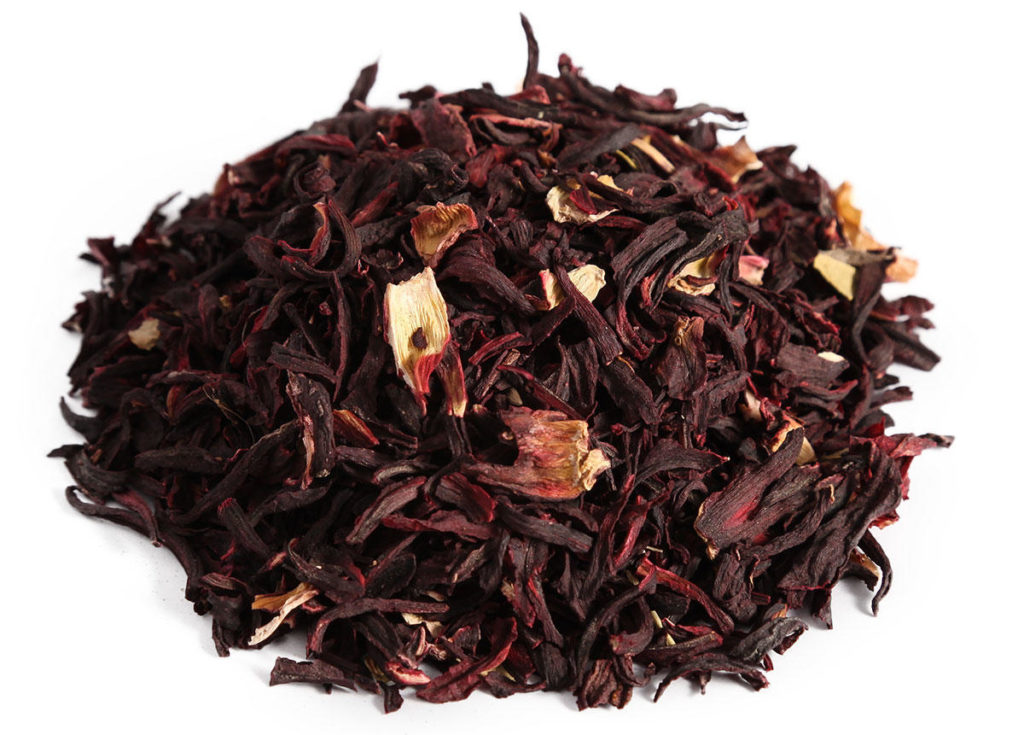
The cost of 50 g - from 165 rubles.
- rich in vitamins, antioxidants and other useful substances chemical composition;
- has antipyretic properties;
- helps to regulate blood pressure: a cold drink lowers it, a hot one raises it;
- perfectly removes a hangover syndrome;
- speeds up metabolism, which is useful for weight loss;
- suitable for making cold refreshing drinks and lemonades;
- recommended for use by pregnant women.
- not found.
Rooibos
votes 3
South Africa is considered the homeland of the tea-like drink Rooibos (Rooibos). It is there that linear aspalatus grows - a shrub, from the leaves of which local residents brewed their own drink in ancient times. There are two options: green and red. In the first case, the leaves and stems of the plant are kneaded and steamed. In the second case, to obtain a bright amber-red color, the raw material is fermented, according to the principle of tea leaves. Red Rooibos is stronger, and in its tonic properties it is close to coffee.
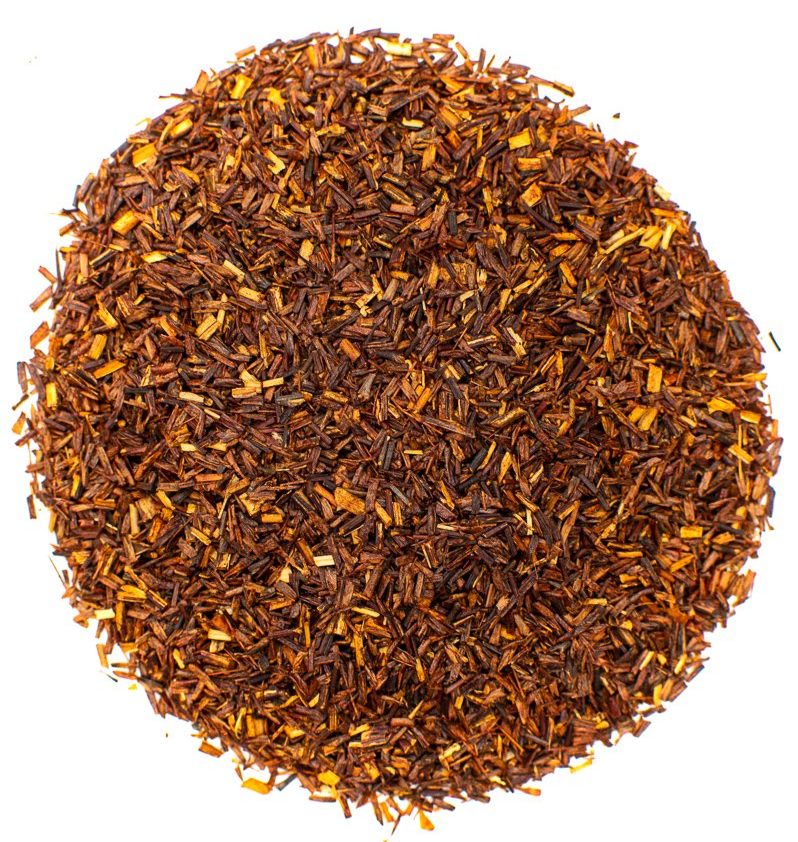
The taste of the finished drink is sweetish with floral-fruity or nutty and woody notes. Often manufacturers add various additives and flavorings that change the taste palette. You can also add sugar, lemon, milk, honey to pure Rooibos without fillers, according to your preferences. These ingredients will diversify the taste of the drink and open up new facets in it.
The cost of 50 g - from 154 rubles.
- high content of vitamins A, C, E, P;
- rich in minerals, micro and macro elements;
- does not contain caffeine;
- perfectly restores physical tone; favorably affects all body systems;
- has an antihistamine effect, which helps with allergies;
- recommended for pregnant and lactating women.
- small brew, which even through a strainer gets into the cup.
Features of the preparation of tea-like drinks Hibiscus and Rooibos:
| Variety | The amount of tea leaves, tsp | Amount of water, ml | Water temperature | Brewing time | Brewed tea color |
|---|---|---|---|---|---|
| Hibiscus | 3 - 7 | 250 | 95 | 5 | ruby |
| Rooibos | 1 | 200 | 80-95 | 10 - 12 | amber red |
We hope our rating will be useful to you and help you choose a drink to your liking.
Popular Articles
-

Top ranking of the best and cheapest scooters up to 50cc in 2025
Views: 131651 -

Rating of the best soundproofing materials for an apartment in 2025
Views: 127691 -

Rating of cheap analogues of expensive medicines for flu and colds for 2025
Views: 124519 -

The best men's sneakers in 2025
Views: 124033 -

The Best Complex Vitamins in 2025
Views: 121940 -

Top ranking of the best smartwatches 2025 - price-quality ratio
Views: 114980 -

The best paint for gray hair - top rating 2025
Views: 113395 -

Ranking of the best wood paints for interior work in 2025
Views: 110319 -

Rating of the best spinning reels in 2025
Views: 105330 -

Ranking of the best sex dolls for men for 2025
Views: 104367 -

Ranking of the best action cameras from China in 2025
Views: 102216 -

The most effective calcium preparations for adults and children in 2025
Views: 102011